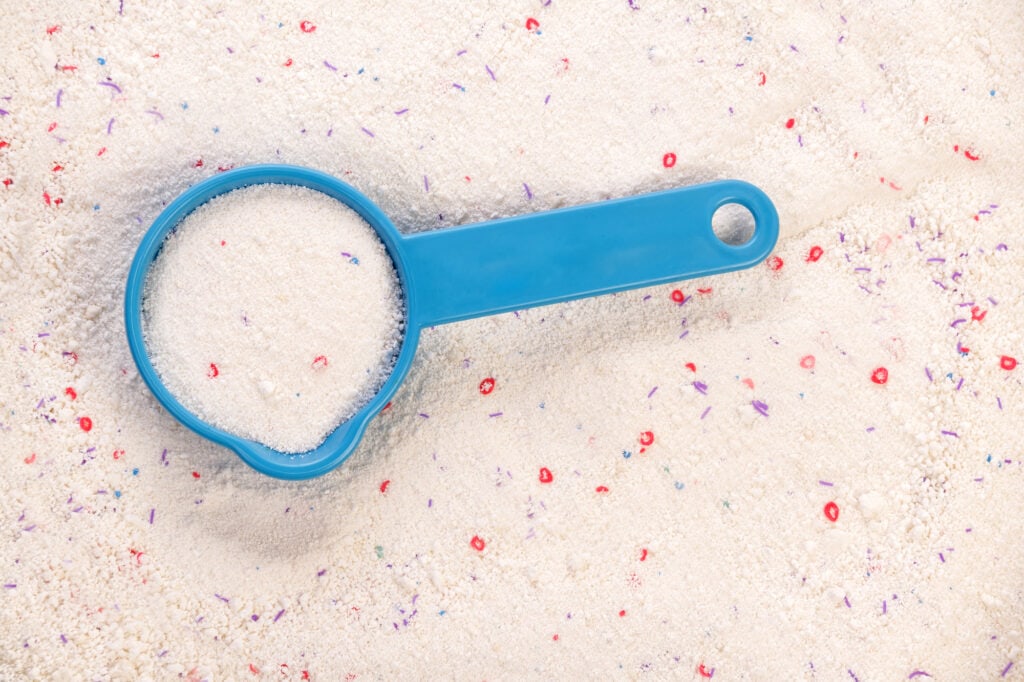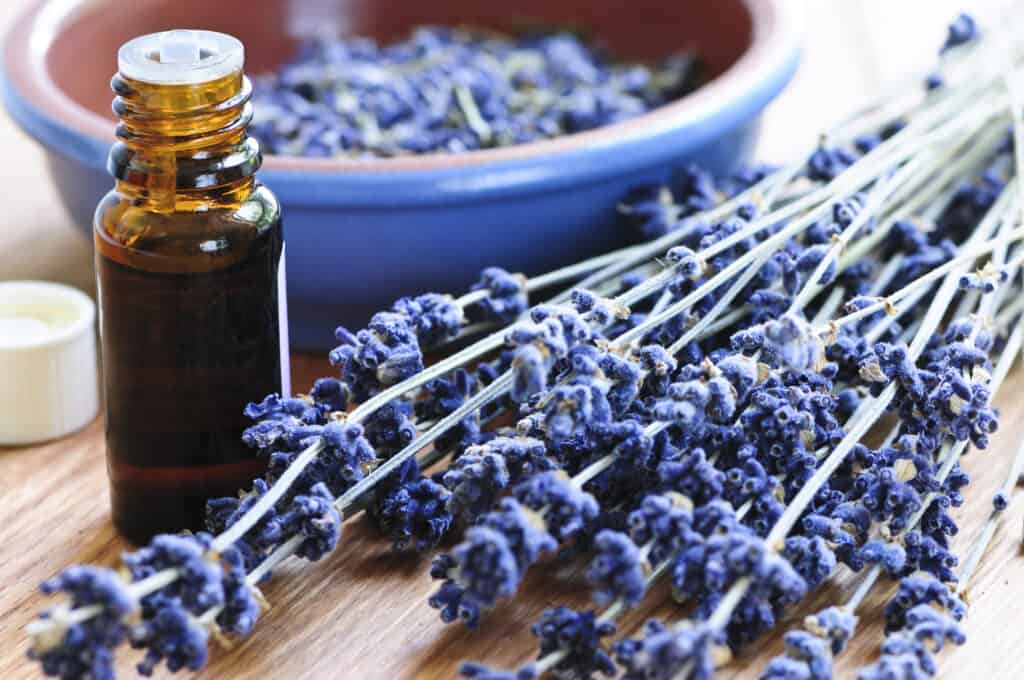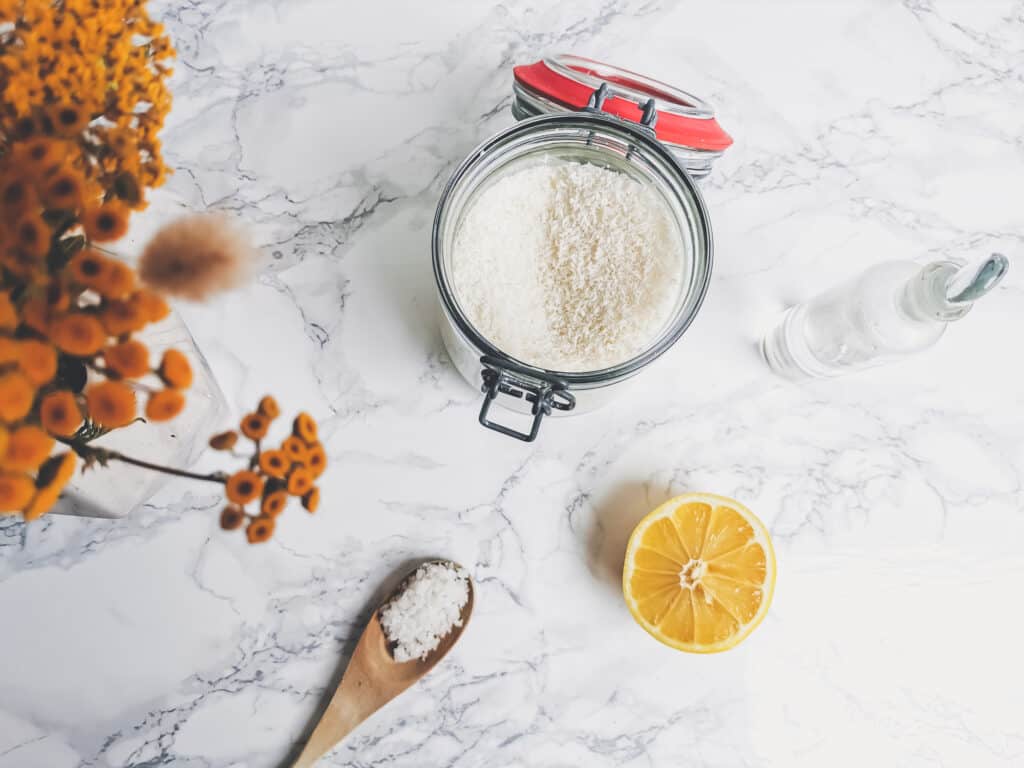EDITOR’S SUMMARY: You’re walking down the street in a suburban neighborhood; make that urban, or inner city, or quantifiably any ‘ole town anywhere. Festering in the air, the thick, dense aroma wafts by you, burning your sinuses and just about choking you. You know that fake-flowery scent all too well—the man-made-in-a factory “fragrance” that coats and covers everything in its wake. Hello laundry detergent, you nasty, multi-million dollar industry.
By Liz Quinn
Everybody wants clean clothes, sheets, and towels, but those whiter whites and brighter colors from the most popular laundry detergents come at a cost that has nothing to do with your wallet.
When you throw in a load of laundry, something the average American does approximately 300 times a year, you’re likely focusing on how clean your clothes will become.
But with mainstream laundry detergents, the appearance of cleanliness also means unseen contamination. The apparent brightness of clothes isn’t necessarily from a spectacular cleaning job, but rather, substances designed to coat clothing and trick the eye.
The fragrant smell of finished laundry isn’t necessarily from the removal of odors, but instead, the covering of them with fragrance.
With so many tricky, potentially harmful, and often mysterious additives in the most common detergents, we’ll be sure to also take a look at the ingredients that are actually necessary to achieve a truly clean, nontoxic load of laundry.
How Laundry Detergents Work
Back in the day, clothes were laundered using washboards, bar soap, and elbow grease. As washing machines mercifully took over this task in the early 1900s, the type of soap needed to change, as agitators (the central piece inside top-loading washers that moves clothes around) didn’t scrub clothes as effectively as humans did.
This is where alkalies came in. Common alkalies include, in ascending order of strength, baking soda (sodium bicarbonate), ammonia, Borax, and washing soda (sodium carbonate), and their purpose is to remove dirt and stains in lieu of rubbing.
Surfactants are arguably the most important ingredient in laundry detergent, as their job is to pull soiled matter from fabric, attaching such grime to the water to be rinsed away.
As the surfactants swish around in the water and clothes mixture, they attach to dirt and oils and lift them off, washing away with the dirty water. If your detergent has an ingredient label, you may see surfactants appear as alkyl sulfates, alkyl ethoxylate sulfates, and ethers of fatty alcohol.
In terms of health concerns, ethoxylates are a tricky ingredient. Various types pose different dangers. According to the Environmental Protection Agency (EPA):
“… nonylphenol ethoxylate [NPE] has been detected in human breast milk, blood, and urine and is associated with reproductive and developmental effects in rodents.”
Detergents containing NPEs were banned by the European Union in 2005, but can still be used in the United States. Alcohol ethoxylates, however, appear to be used more often in many detergents and pose less of a concern.
The Environmental Working Group (EWG) has a database of cleaning products they’ve scrutinized, and even by their standards, there are detergents that manage to score an “A” with alcohol ethoxylates as ingredients.
Doth My Tide Deceive Me?
The eternal struggle when it comes to detergents is finding one that’s natural, gentle, nontoxic, and effective. Anyone who’s already on board with natural detergents has surely struggled with removing stubborn stains, often via multiple washings.
Sometimes the extra soaking and scrubbing gets tiring. For those occasions, that bottle of extra-strength, lab-made detergent might seem tempting. But the secret ingredient that makes the brand-name detergents seemingly effective is often not their actual cleaning ability, but a little trick of the trade called optical brighteners. They are what they sound like: an optical illusion.
When you see words like optical and fluorescent on the bottle, you can be sure the product contains brighteners. These substances coat the fabric, making clothing reflective; at once reducing the appearance of yellow, and enhancing the blue light that your eyes pick up as white.
So you think your clothes are brighter, but really they’re bluer and not necessarily cleaner.
Such trickery isn’t a new ruse by modern detergent makers. This sleight of hand has been happening since the mid–1800s. Back then, it was called laundry bluing. A washer, or “laundress,” would add actual blue dye, often in the form of a little bag containing the color and baking soda, to make garments look clean and bright.
If your priority is to make your clothes look brand new, this might sound more like a cool parlor trick than cause for concern. The problem is that the chemicals come with toxicity potential and a host of unknowns.
In terms of human safety, studies regarding optical brighteners have been inconclusive. A study published in the Journal of the American Academy of Dermatology, found participants’ skin reactions were often not triggered by the detergents they tested…unless exposed to “abrasive action,” in this case, UV light.
In other words, the optical brighteners only showed a reaction if you were wearing the clothes outside. As is often the case with human health and synthetic substances, the concern is in what we don’t yet know.
What we do know is that optical brighteners coat clothing and are designed to stick around. You can even detect them glowing on your clothes using a black light. It’s known that optical brighteners react to UV light (natural sunlight).
The European Commission assigned Ecolabeling Denmark with the task of “updating ecolabel criteria for laundry detergents.” They found the reaction between brighteners and sunlight resulted in “numerous metabolites that have not been identified.”
Since those metabolite byproducts have not been identified, it’s hard to determine what a reasonable level of concern should be. Considering your skin is your largest organ, it’s worth weighing your desire for the appearance of clean clothes, against unknown chemical byproducts rubbing up against your skin for hours on end.
As for the environment, the same European report mentions aquatic toxicity from optical brighteners, and states they are not readily biodegradable. According to a paper by the California Water Board:
“Laundry wastewater is the largest contributor of optical brighteners to wastewater systems because it retains a large portion of dissolved optical brighteners.”
The brighteners stick around long enough that the Water Board actually uses their fluorescence as an indicator of improper drain discharges and leaking wastewater treatment pipes.

Fooled by Fragrance
Popular detergents don’t just use visual trickery to affect your perception of cleanliness. Even more influential when it comes to laundry and your senses is smell. While the true measure of clean is the absence of odor, companies have found that customers often base their detergent choices largely on scent.
Unfortunately, herein lies the most evidence-based danger laundry products pose: fragrance. A University of Washington study found that air vented from machines using the most popular laundry detergents and dryer sheets contained more than 25 “volatile organic compounds.”
Otherwise known as VOCs—these chemicals you may have already chosen to avoid in products like house paint, are not ones you want dispersed into your home air.
Among the chemicals the researchers found were acetaldehyde and benzene, both classified by the Environmental Protection Agency as carcinogens. The scientists pointed out that unlike other emissions, such as automobiles and smokestacks, that are regulated, air from dryer vents is not. This means any “regulating” is left to you.
A study exposing mice to the emissions of 5 commercial fabric softeners (dryer sheets) for 90 minutes revealed sensory irritation from 21 to 58% of breaths, pulmonary irritation from 4 to 23%, and airflow limitation from 6 to 32% of breaths.
The researchers concluded:
“The results provide a toxicological basis to explain some of the human complaints of adverse reactions to fabric softener emissions.”
It’s no wonder scent plays such a large role in decisions as mundane as choosing a laundry detergent. Scientists have found the power of smell to be so profound that it can elicit physiological changes in people.
In a 2016 Brown University study involving “odor-evoked memories,” researchers found that a scent associated with a positive memory reduced physical inflammation. They noted:
“[These odors] have the potential to increase positive emotions, decrease negative moods, disrupt cravings, lower stress and decrease inflammatory immune responses.”
So if there’s a particular laundry scent you associate with home, safety, or cleanliness, it’s no wonder the product would have such a draw.
If that’s the case for you, or you simply like a little scent to make your clothes seem fresher, there are ways to add a touch of olfactory enjoyment without the hazards of synthetically-fragranced laundry detergent.

From the Earth, Lovely Scents Abound (options for your consideration)
A creative and fun option is to set your sights on essential oils. Of course, adding oil to a load of laundry in which you’re trying to remove oil and dirt may seem counterproductive. Some DIY “recipes” recommend simply mixing essential oils into your unscented detergent of choice.
If you don’t trust a liquid detergent to sufficiently dispel the oil, The Filtery, a site providing information on reducing toxins in everyday life, suggests mixing essential oils with solids: baking soda and Epsom or Kosher salt.
Take a look at the specific process if you’re so inclined. The most recommended essential oils for laundry use are tea tree, lavender, eucalyptus, and those in the mint or citrus families.
If you don’t want to continuously wonder (and worry) about what is and isn’t in your detergent, you can go ahead and make it yourself—“the DIY way.” Your online research will produce plenty of recipes for homemade detergents.
A word of caution by “Healthy House on the Block”: If you have hard water, making your own detergent can leave your clothes somewhat stiff, and possibly dirtier, because of the interaction between detergent components and minerals in the water.
If you don’t have hard water and want to give homemade a try, adding an extra rinse can help clear out any residue that tends to embed in the clothes. Even with an extra rinse, though, homemade detergents often have a harder time dissolving effectively in cold water.
If your clothes aren’t able to handle a hot water wash, searching for an unscented, natural detergent at the store may be your best bet.
Now, if you’re simply not up for the task of home preparation, there are resources to help determine your least toxic options among store-bought detergents. The EPA has a “Safer Choice” program whose database you can search.
For even more detailed ratings, the Environmental Working Group (EWG) has gone down the rabbit hole for you, determining the potential risk and level of concern of thousands of ingredients, resulting in a simple score from A-F for products both obscure and readily available.

From DIY soaps to nontoxic store options, there’s a wide range of choices when it comes to keeping you and your family safe from unnecessary laundry toxins. If nothing else, staying far far away from “fragrances” is a smart place to begin.
Even the “natural” products can contain toxins if the product is scented. The term “fragrance” alone can include any of some 4,000 different chemicals. If you need that “fresh” smell to seal the deal, find an essential oil you like, and create your own scent so you know exactly what you’re inhaling.
If you really need your whites to glow, consider soaking them in lemon juice and water, then washing, or drying them outside in direct sunlight—methods that function as natural bleach. The bottom line? Don’t let manufacturers trick your eyes or nose into harming the rest of you.
~
Published on April 20, 2023
If you’d like to contact A Voice For Choice Advocacy, please email media@avoiceforchoice.org.
If you would like to support the research and health education of AVFC editorial, consider making a donation today.

